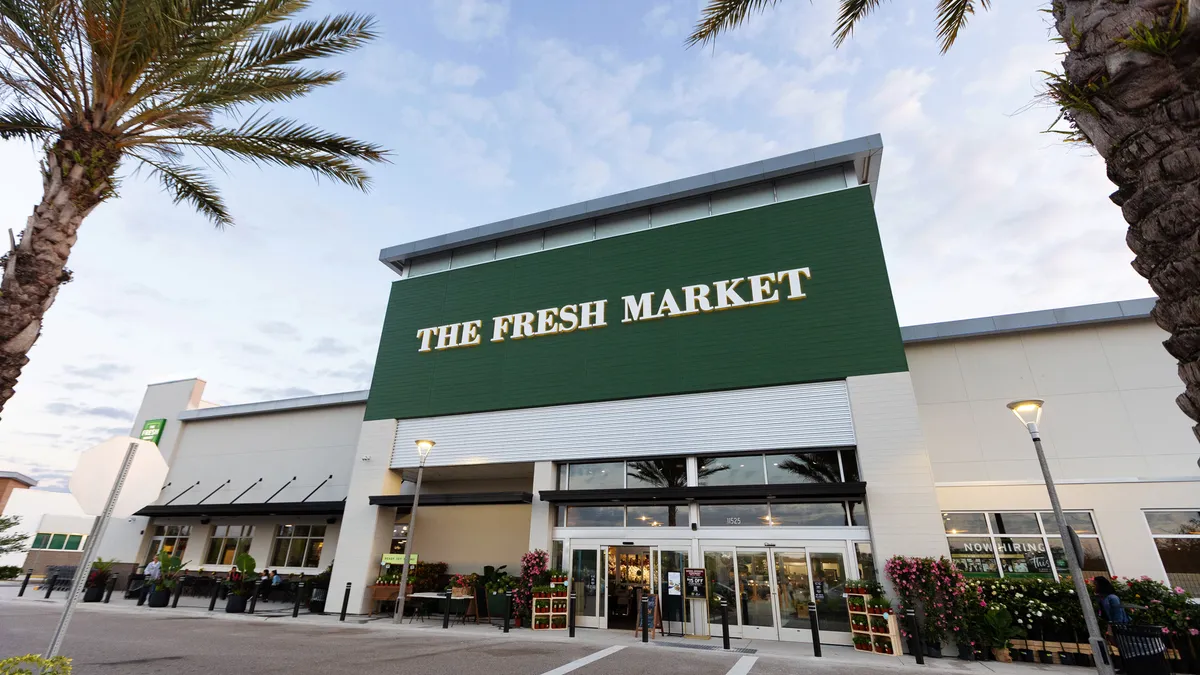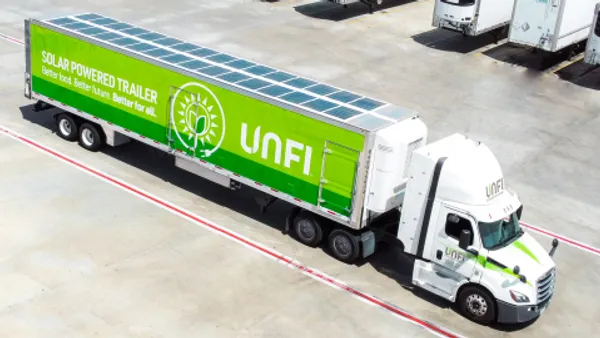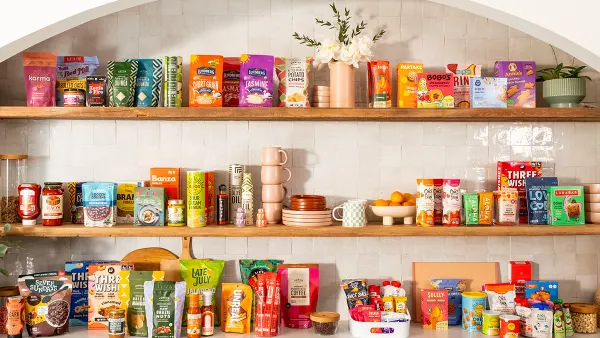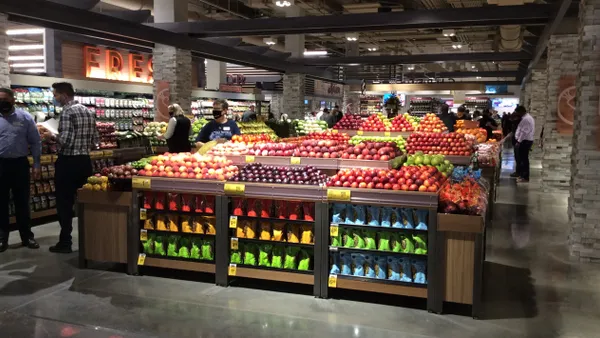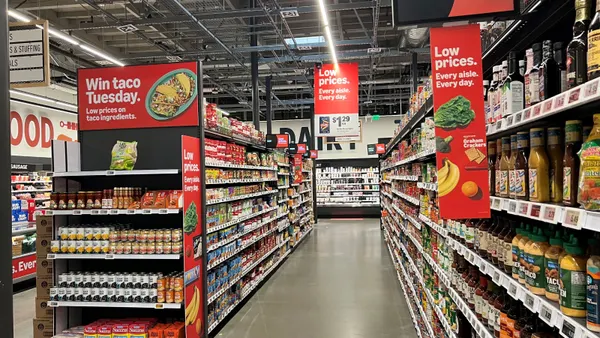While German discounters Aldi and Lidl have kicked up a lot of dust over the past year, an American-born competitor has quietly accelerated its own growth plans and hopes to carve out a thriving niche with its extreme-discount approach centered on national brands.
It’s been a busy year for Grocery Outlet. At a time when most major grocers have curbed their growth, the chain — which operates in Pennsylvania and the western states of Oregon, Washington, Idaho, Nevada and California — opened 30 new stores this year and plans to open 40 more this year, putting it up there with the industry's fastest growers.
The retailer has focused heavily on expansion in Southern California, in particular, and was cited as a growth driver for grocery store square footage in California in 2017 in an analysis from Jones Lang LaSalle. The retailer now operates more than 70 stores in the region.
In June, Grocery Outlet opened its 300th store in Inglewood, California, and within the past few weeks alone, it held store grand openings in Rialto, California; Junction City, Oregon (the city’s fourth store) and Everett, Washington.
While these are all located in existing Grocery Outlet markets, the grocer hopes that it can expand nationally. But with so many companies out there competing on price as well as experience, it faces a very steep road ahead.
A unique approach
A recent survey from Valassis found that 93% of shoppers today seek deals and discounts on their grocery purchases. Those shoppers have their pick when it comes to discount grocers, with more and more low-price leaders popping up on a daily basis. Dollar General continues to see major growth as it pushes further into grocery, Aldi’s nationwide expansion seems to be unstoppable, and Lidl has shown its versatility as it pushes deeper into east coast markets. In addition, Walmart’s upward trajectory in the grocery category and the discount grocery scene has started to get pretty crowded.
Grocery Outlet, which started in 1946 when founder Jim Read began buying and selling surplus food from the military, offers shoppers 40% to 70% off nationally recognized grocery brands under an “opportunistic buying” model. The company purchases from manufacturers that have excess inventory and passes those discounts onto customers.
The lineup of products is often different with each shopping trip. A recent Grocery Outlet ad, for example, offers buy-one-get-one Cherubs cherry tomatoes and Foster Farms boneless, skinless chicken breast for $1.60 a pound. But odds are those same products will be out of the rotation within a couple of weeks.
Grocery Outlet declined to comment for this story. But industry experts say its unique model stands out, and believe it has a long runway for growth.
“Consumers love adventure. If we look at why these stores have done so well, it’s because you never know what you’re going to get next time,” Phil Lempert, founder and editor of SupermarketGuru.com, told Grocery Dive in an interview. “People love to save money, there’s no question. If you can combine that with a treasure hunt, from a consumer standpoint, it’s great.”
The product assortment can vary from store to store as well because Grocery Outlet store locations are individually owned and operated. Each owner can choose what products they want to take or not. “It’s not a forced distribution model, which is one of the other reasons it’s very attractive. You own the store, it’s not a franchise,” Lempert said.
"People love to save money, there’s no question. If you can combine that with a treasure hunt, from a consumer standpoint, it’s great."

Phil Lempert
Founder and editor, SupermarketGuru.com
The combination of local ownership, opportunistic buying, hyper-localized assortments and national brand focus has helped Grocery Outlet emerge as a disruptive competitor in a crowded field, Carol Spieckerman, president & CEO of Spieckerman Retail, told Grocery Dive in an email.
“The grocery business is relentlessly competitive these days as everyone from dollar stores to drug retailers enter the fray,” she said.
She noted that Grocery Outlet’s independently owned model makes it a formidable competitor to Aldi in particular.
“Aldi is known for its highly-efficient operation model but also its ability to retain top store talent,” Spieckerman said. “Grocery Outlet can position as being the ‘local store’ in the communities it serves, and its customers leave feeling smart for having shopped there. It’s a powerful combination that should translate well in enumerable markets.”
Embracing trends in food and design
In the past, Grocery Outlet stores had more of an industrial, warehouse feel but today the new stores are focusing on better design and a more attractive layout for shoppers — especially millennials.
A new store in downtown Los Angeles, for example, is modern and hip, focusing on clean lines and a design aesthetic that matches the surrounding area, said Layla Kasha, vice president of marketing for Grocery Outlet, in an interview at the Specialty Foods Association’s Fancy Food show in July.
The store is heavily shopped by millennials, and Kasha said in the interview that they make up an important demographic for Grocery Outlet. Millennials seek both value and high-quality foods, and they have a clear preference in their eating habits.
“They all want to eat organic,” Kasha said. “They all want these cool products. They all want to understand the experience of the food. But they also want to know everything they can know about the product they’re eating.”
While they don’t represent a huge number of Grocery Outlet’s total shoppers, millennials are the store’s biggest and most vocal fans, Kasha said in the interview.
Relying on its traditional business model while still showing flexibility and understanding the needs of its shoppers today is just one way that Grocery Outlet drives customer loyalty.
A focus on national brands
Perhaps the most notable differentiating factor for Grocery Outlet is its ongoing partnerships with national brands, offering shoppers deep discounts on household names like Kellogg and Campbell Soup. Some might see adherence to this model as risky, especially since private label sales are outpacing national brand sales, but the model is working well for Grocery Outlet, which recently surpassed $2 billion in annual sales, according to Supermarket News.
"Consumers’ familiarity with the brands that Grocery Outlet carries, combined with the ability to quickly assess value, make it easy for Grocery Outlet to gain traction. As Grocery Outlet wins trust, the number of individual visits and basket size should increase."

Carol Spieckerman
President & CEO, Spieckerman Retail
Lempert said a major reason for this is that many people still care about brand names.
“Whether it be right or wrong, that’s a reality,” he said. “For them, Grocery Outlet is the place to go because they don’t want to go into Aldi and see 95% of things be Aldi brand.”
Spieckerman agrees. She said that while private label offers margin benefits and a unique assortment, Grocery Outlet’s commitment to name brands is a benefit.
“Its ability to offer unquestionable value on recognized brands gives it a straightforward advantage,” Spiecerkman said. “Consumers’ familiarity with the brands that Grocery Outlet carries, combined with the ability to quickly assess value, make it easy for Grocery Outlet to gain traction. As Grocery Outlet wins trust, the number of individual visits and basket size should increase.”
The right time for expansion
If its recent success in 2018 is any indication, Grocery Outlet can expect that its store openings in 2019 will be met with great enthusiasm. And while plans to open at least 40 stores, including locations in new markets, is optimistic, Lempert thinks the company is well positioned.
“I don’t think it is ambitious,” Lempert said. “I think that they can pull it off. I think that the timing is right for smaller stores.”
He noted that due to accelerating consolidation in the industry, there may be a workforce out there of store managers and store executives, and food and non-food store people, who are looking for jobs and are ready to take on a new challenge.
“Owning a community-driven business like Grocery Outlet may be the right opportunity for them. Qualified, experienced talent will be available, and that’s what we need in the industry.”




